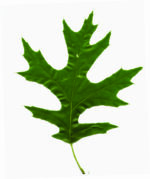
Description: The tree can grow to 150′ heights with trunks 6′ in diameter in fertile upland forest soil. Open grown trees more often approach only 70′, with trunks that separate into several large branches. Northern red oak has distinctive leaves up to 9″ long, with a pointed bristle on each lobe tip. In the spring, flowing catkins of pollen-bearing flowers emerge amid the greenery. Acorns about 1″ long develop every two years. Rare is the board of northern red oak that carries a trace of its light-colored sapwood. Instead, the vast majority of northern red oak treats woodworkers to nicely figured heartwood with a pinkish tint. You’ll find that northern red oak has coarse-textured, straight, open grain. This hard, stiff, strong wood weighs 44 pounds per cubic foot dry-just a little more than walnut.
Best Uses: Being the most commonly used hardwood in North America, red oak’s uses are extensive, including mine timbers, railroad ties, architectural interiors, flooring, millwork, cabinetry, plywood, coffins, pallets and more. The bark in red oak is rich in tannin, used in tanning leather.
Wood: Red oak is a strong, dense hardwood with good steam bending qualities, high shock resistance, medium bending strength and stiffness.
Binomial name: Quercus rubra
Thank you to wood magazine for content




